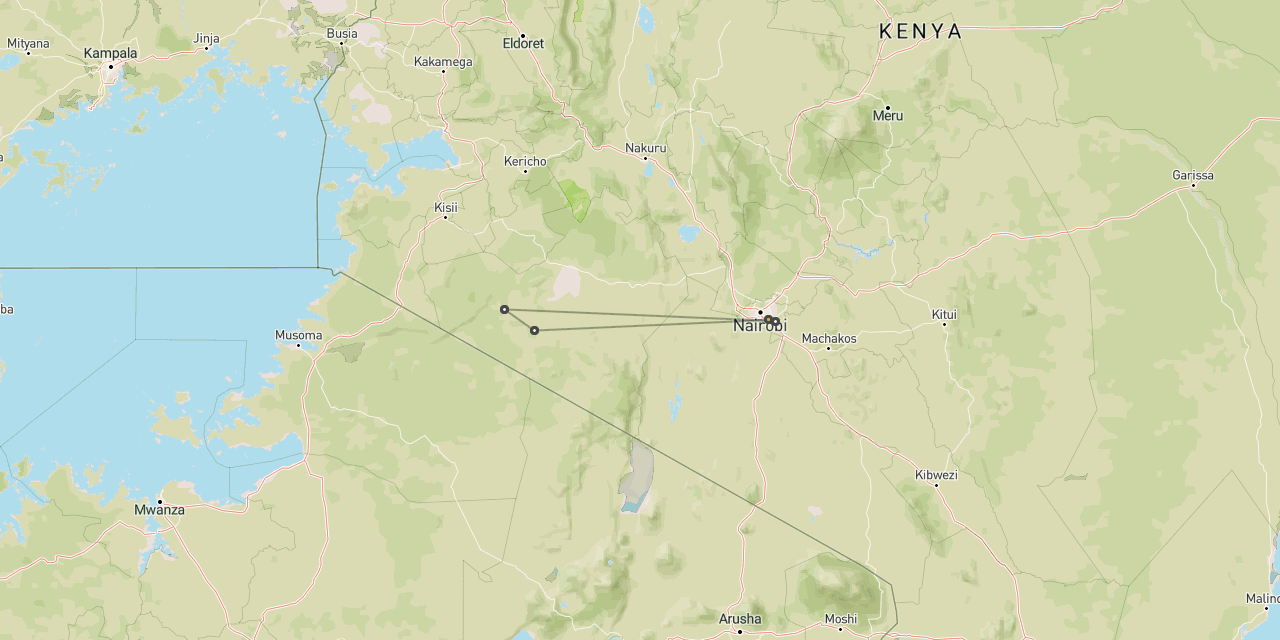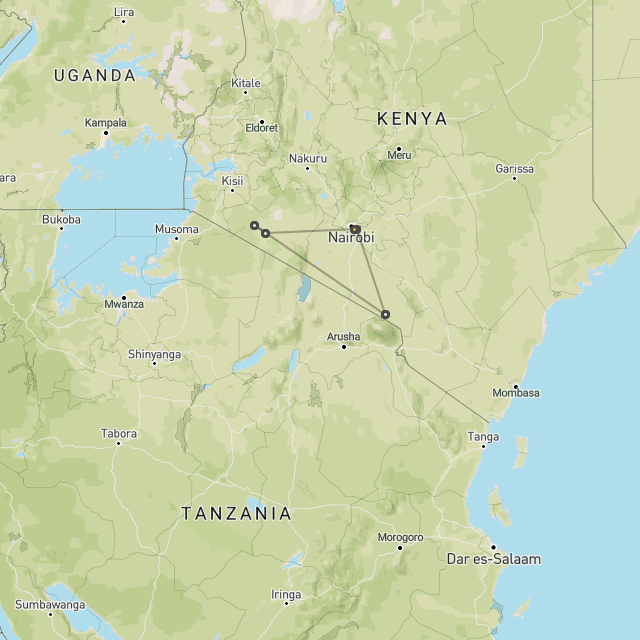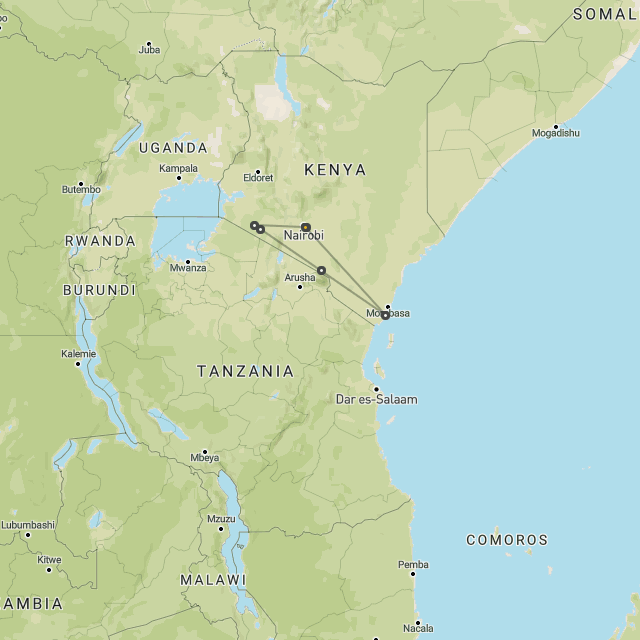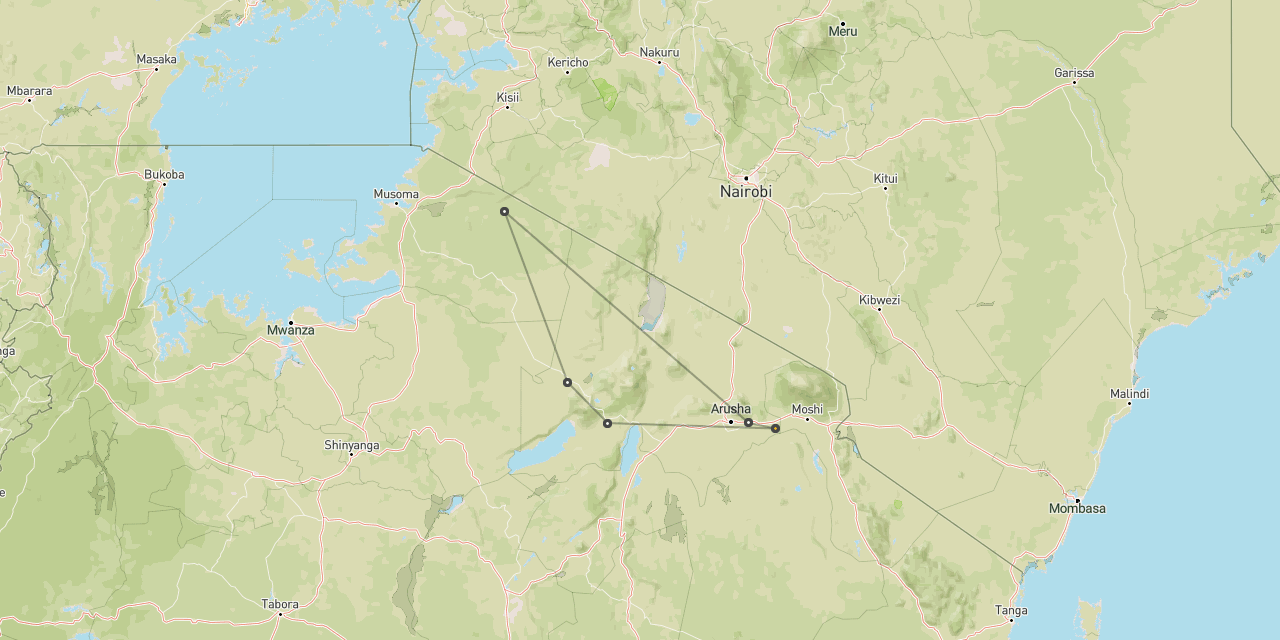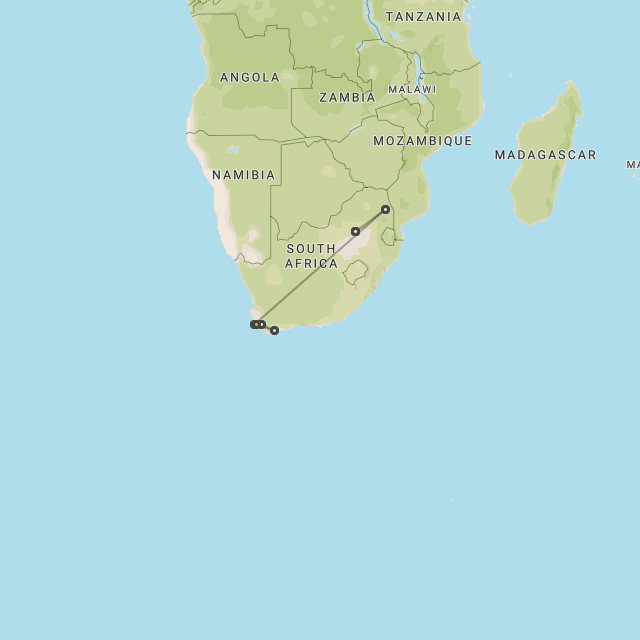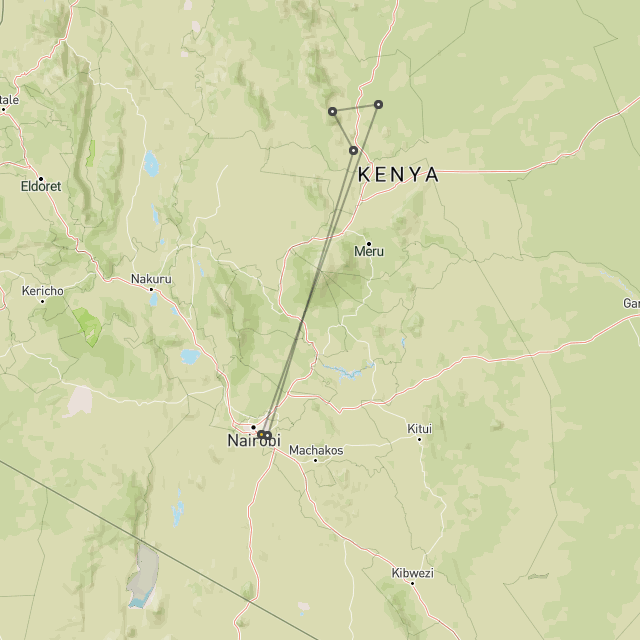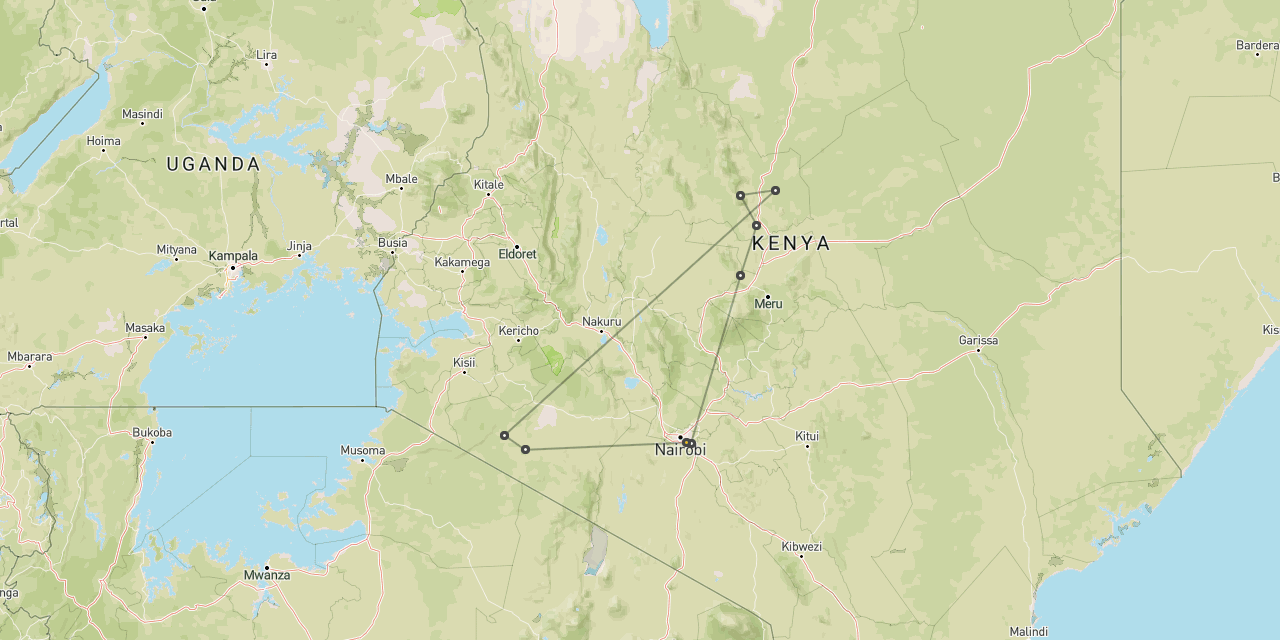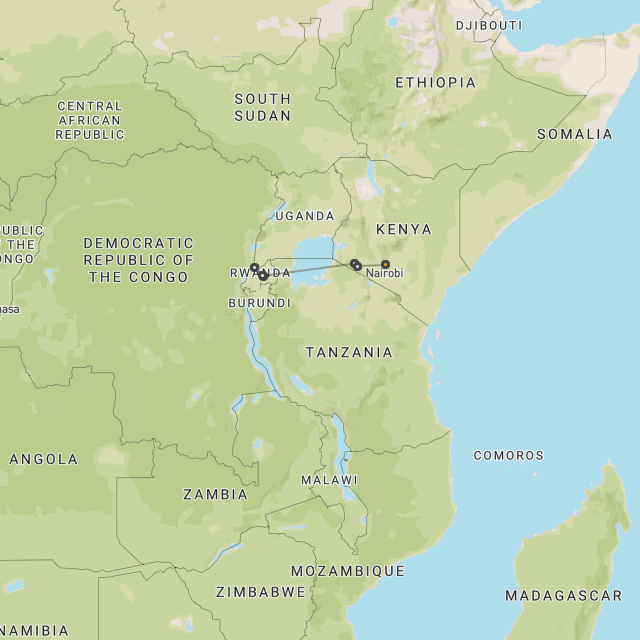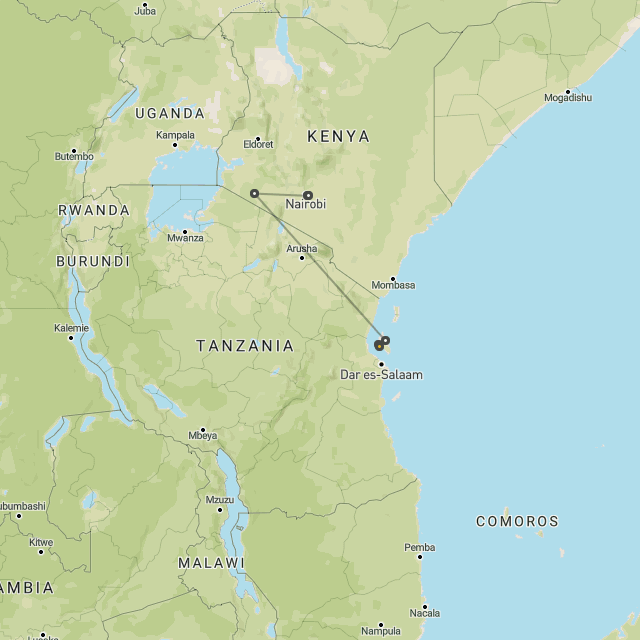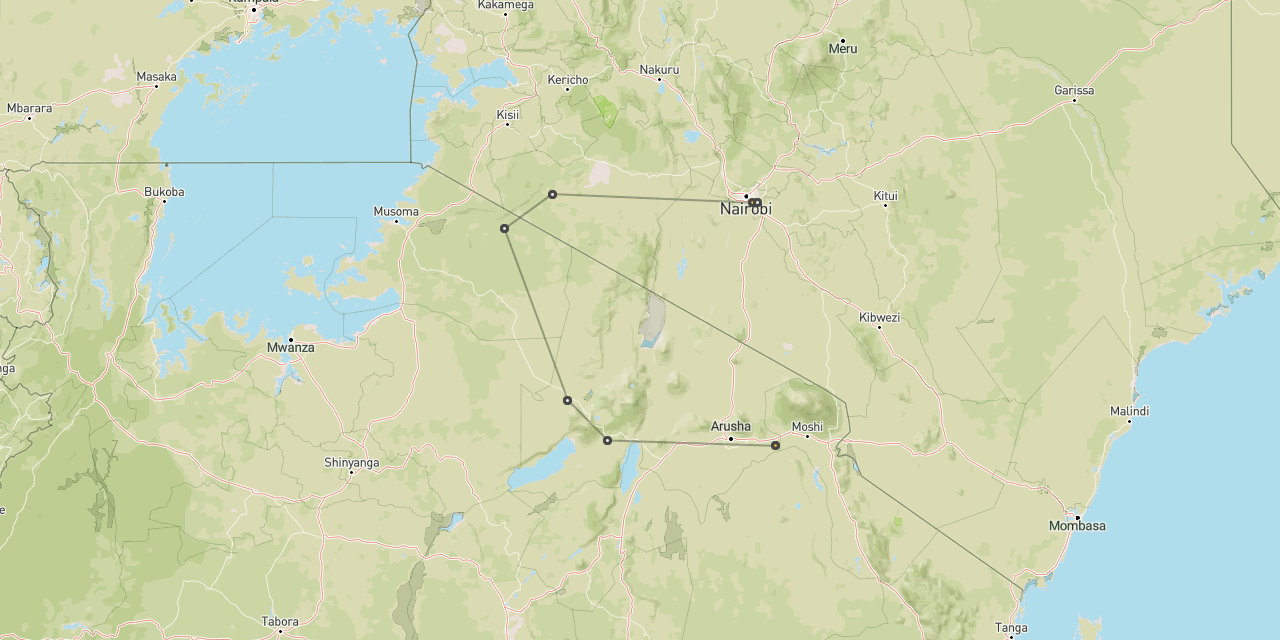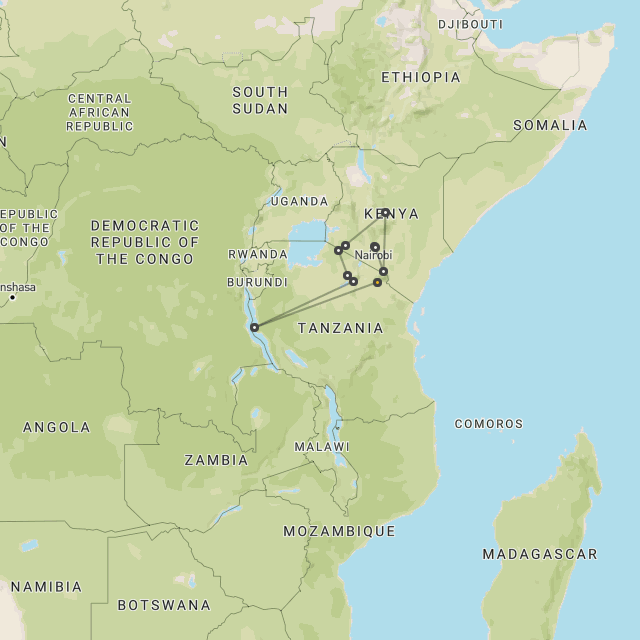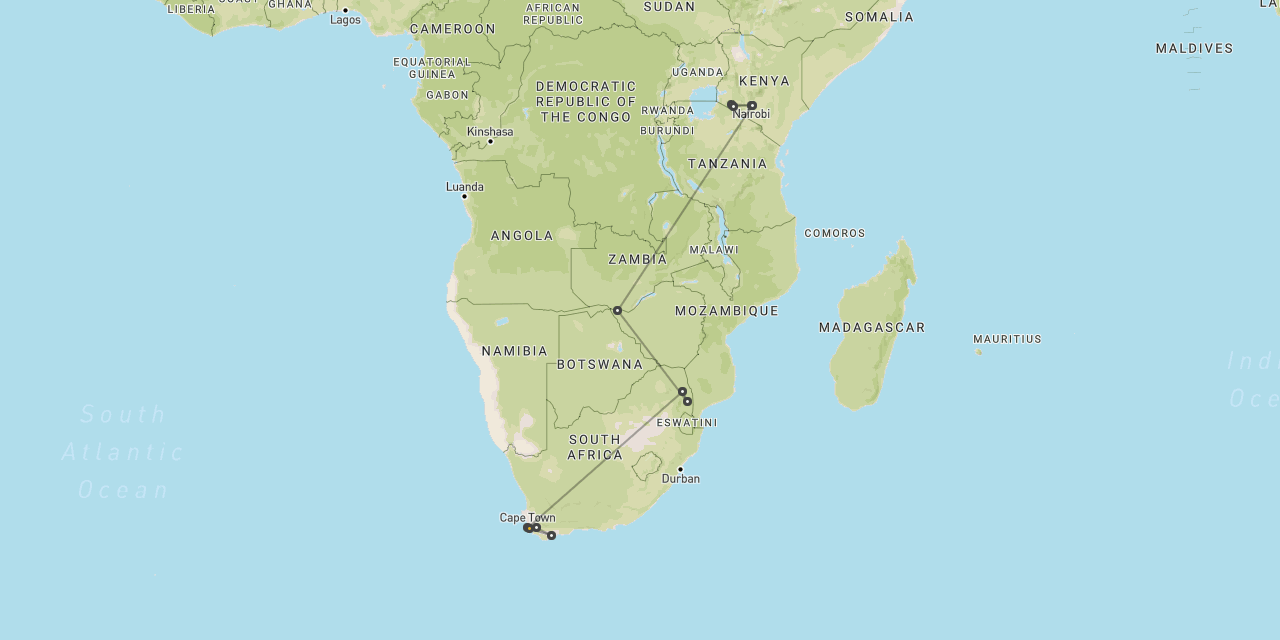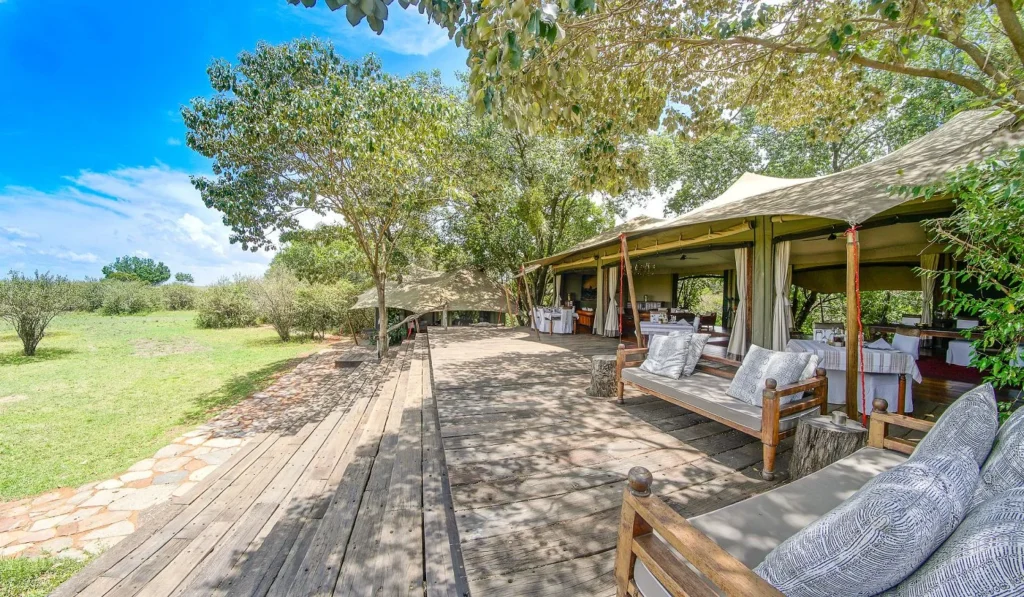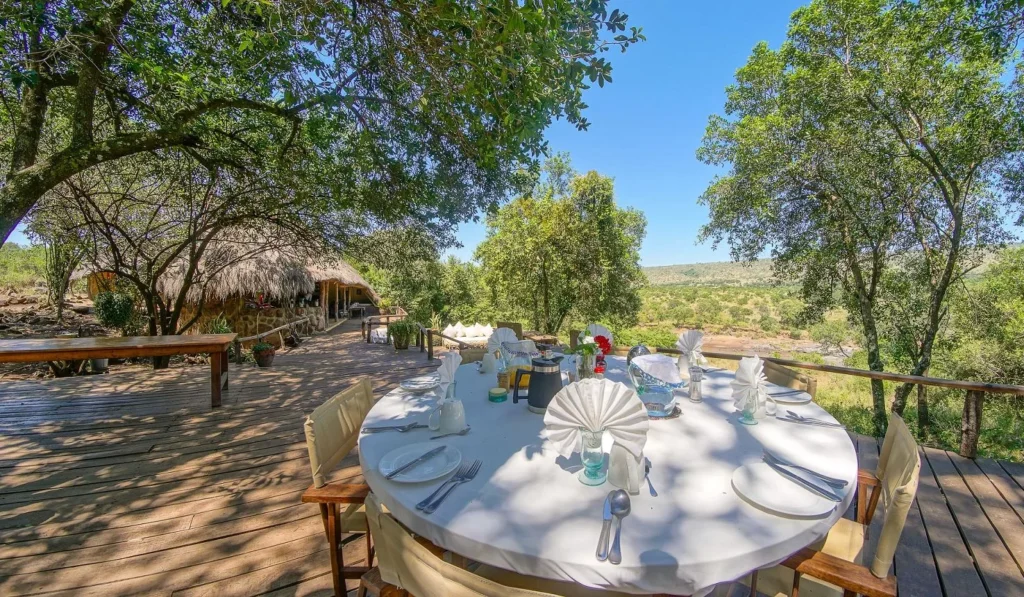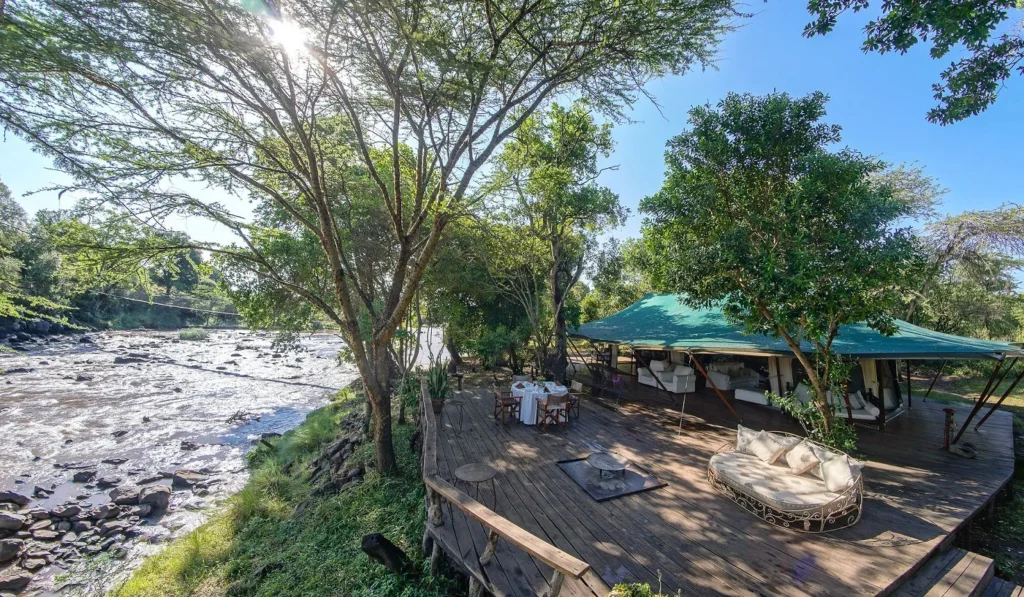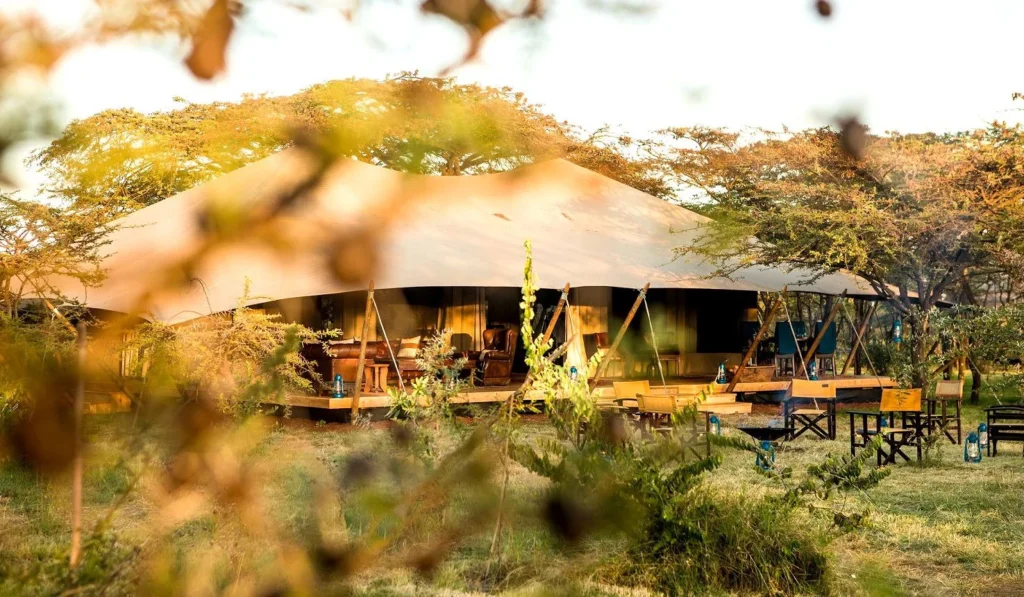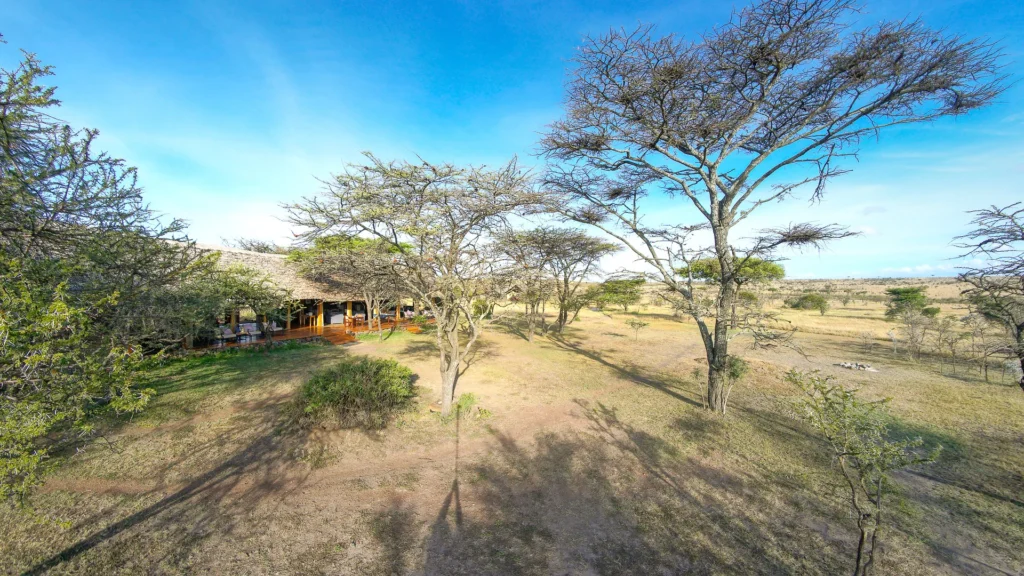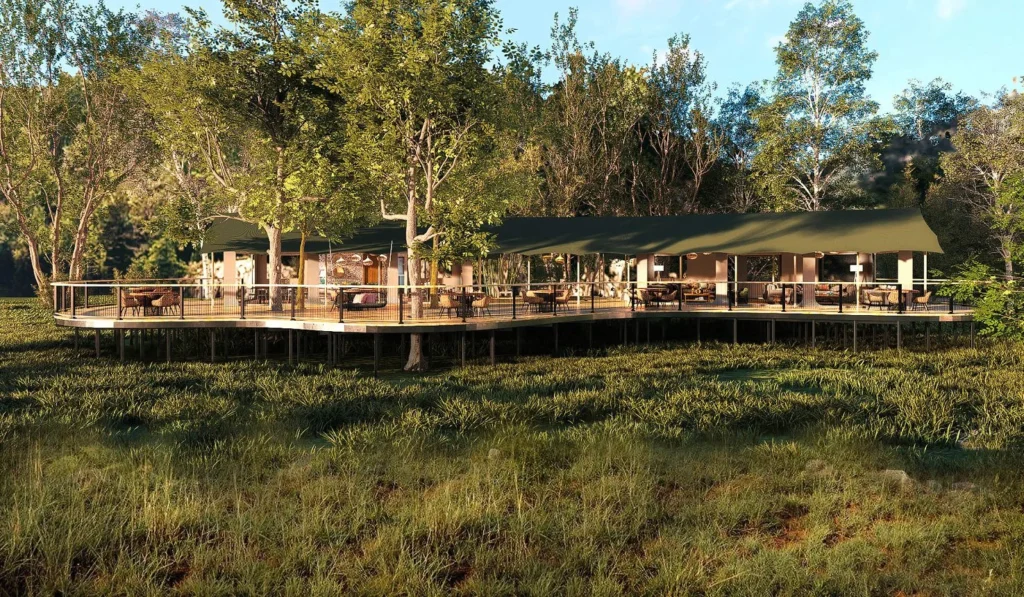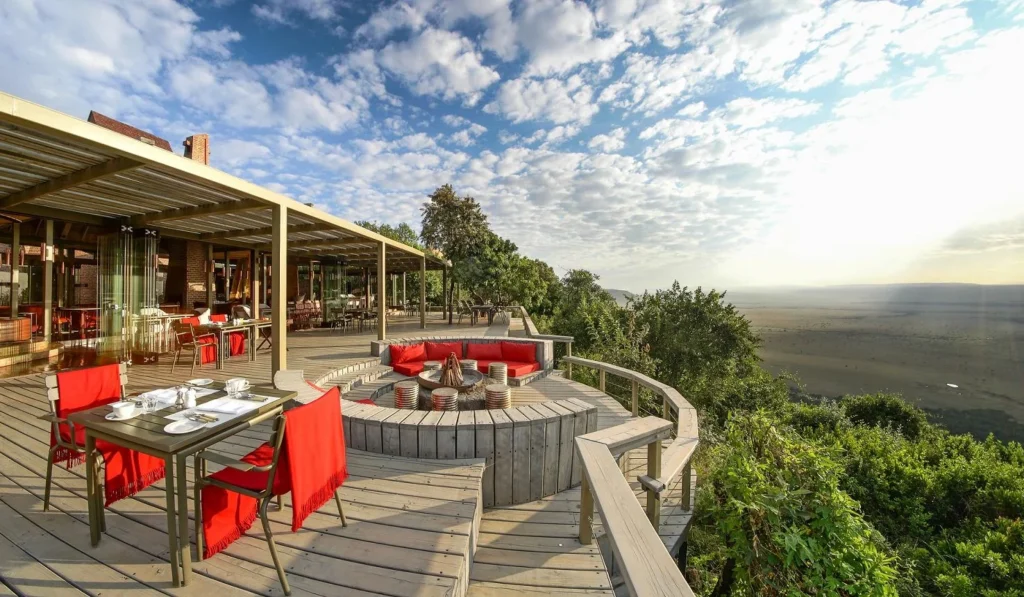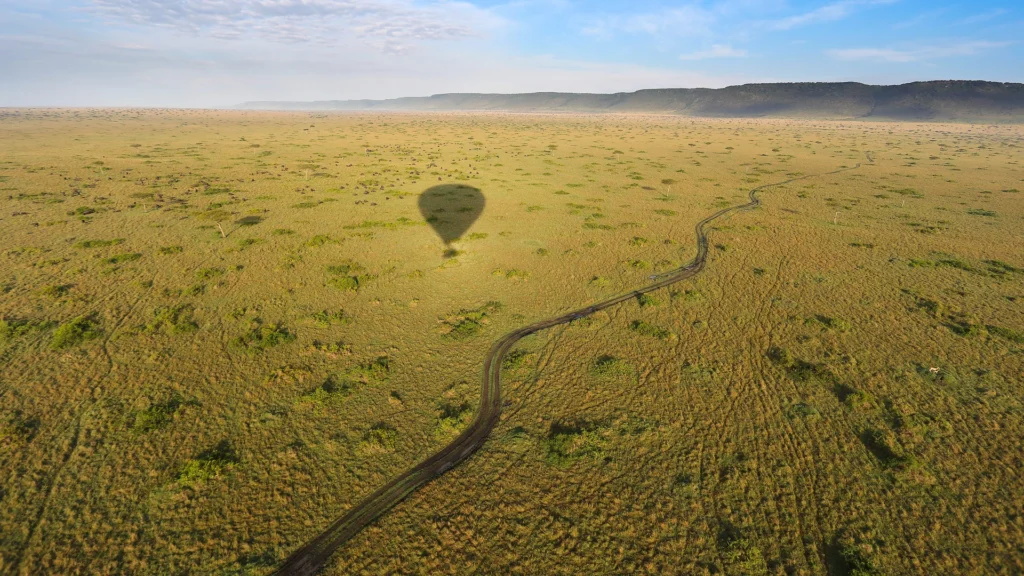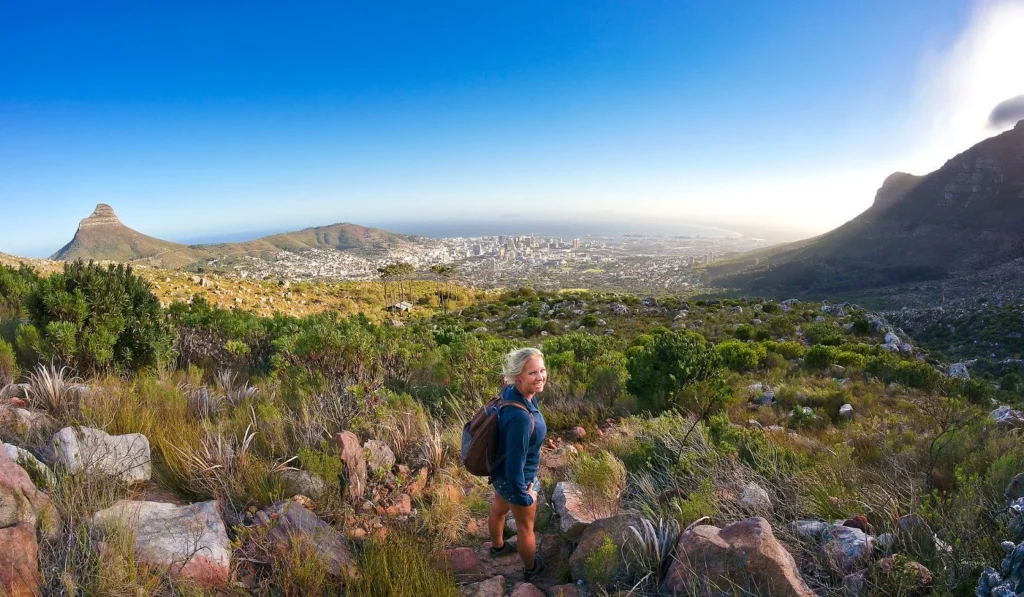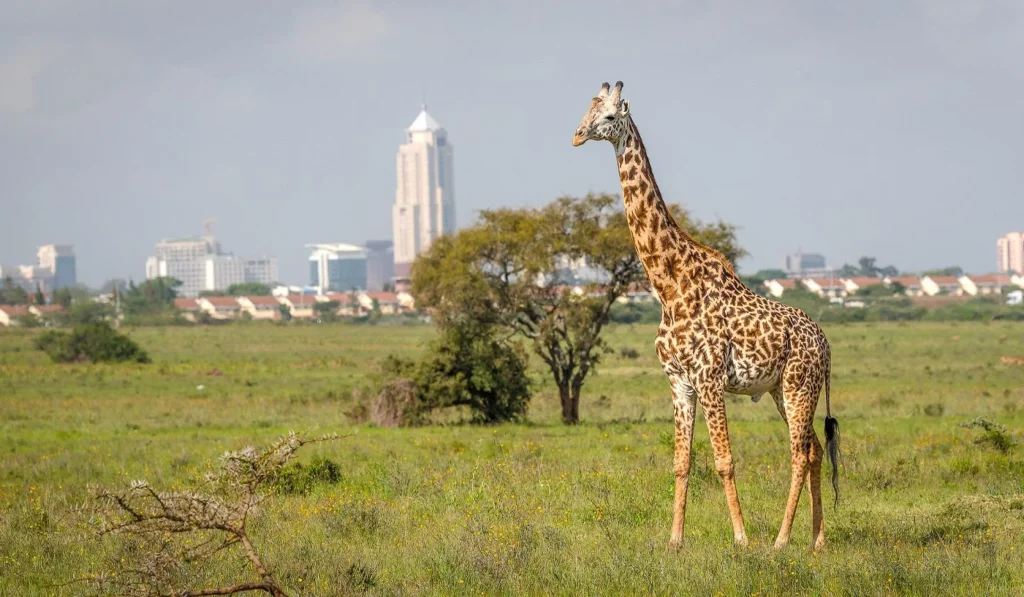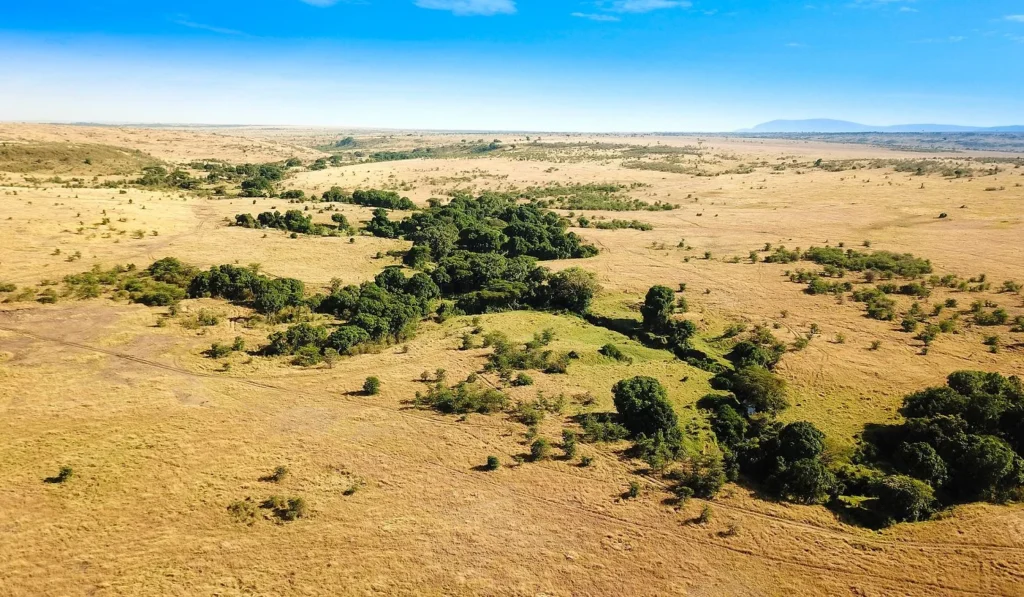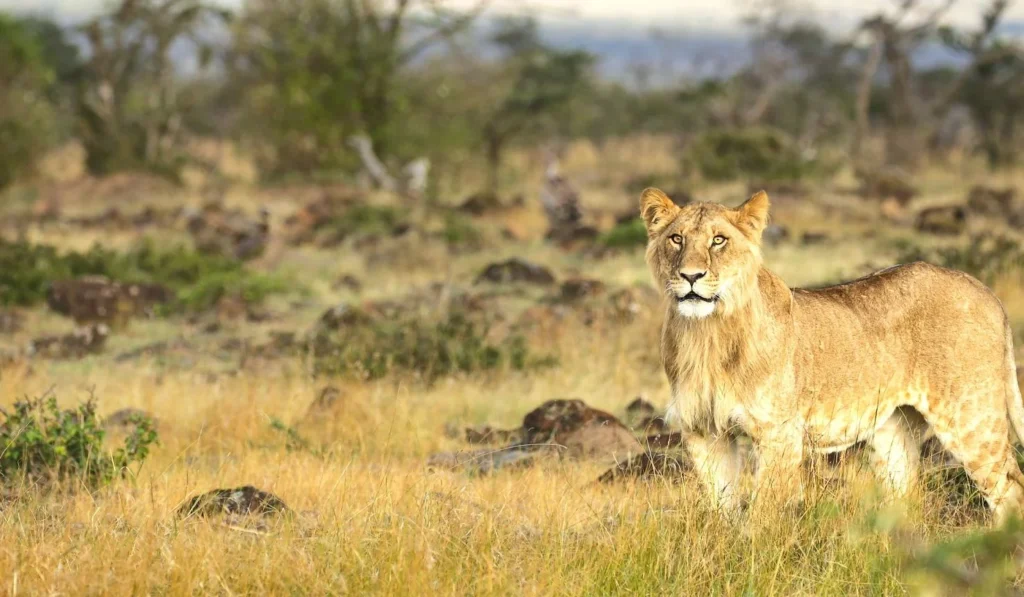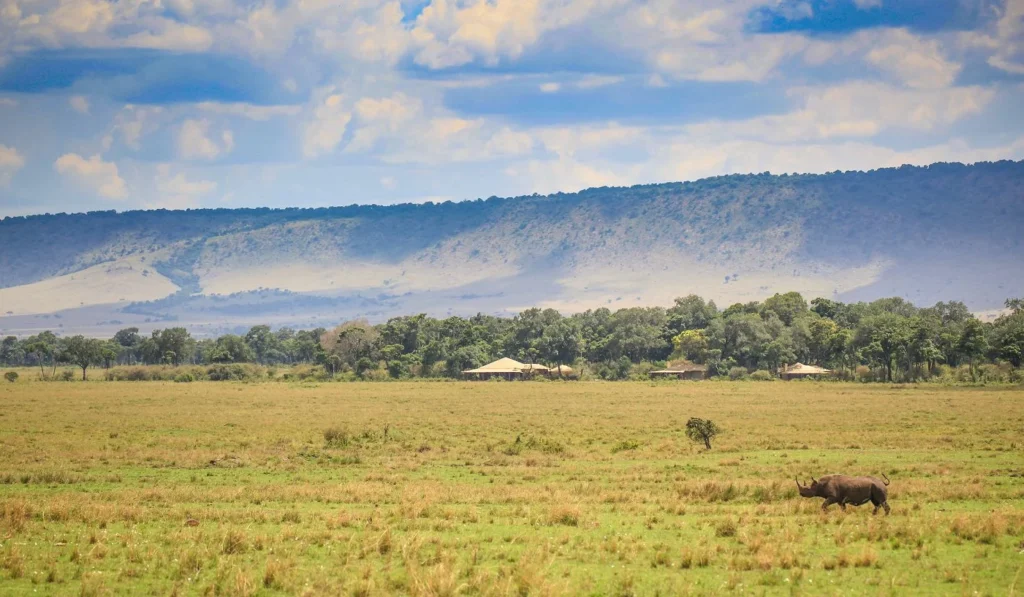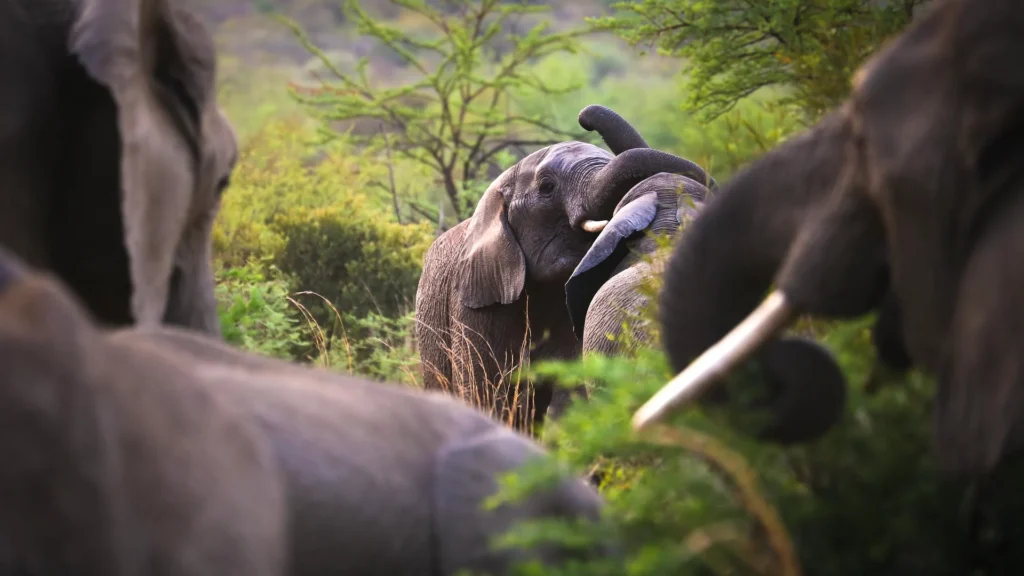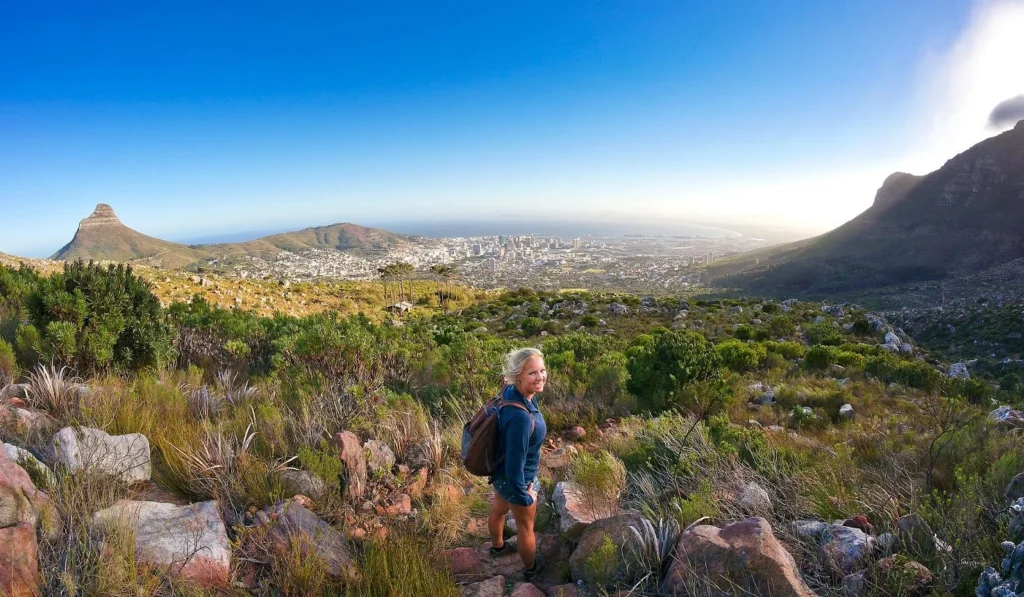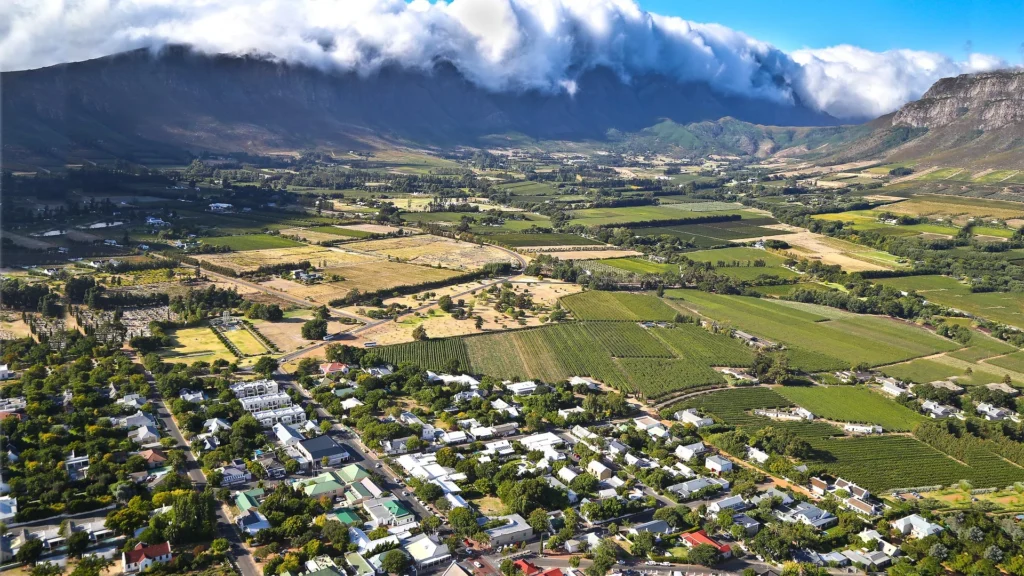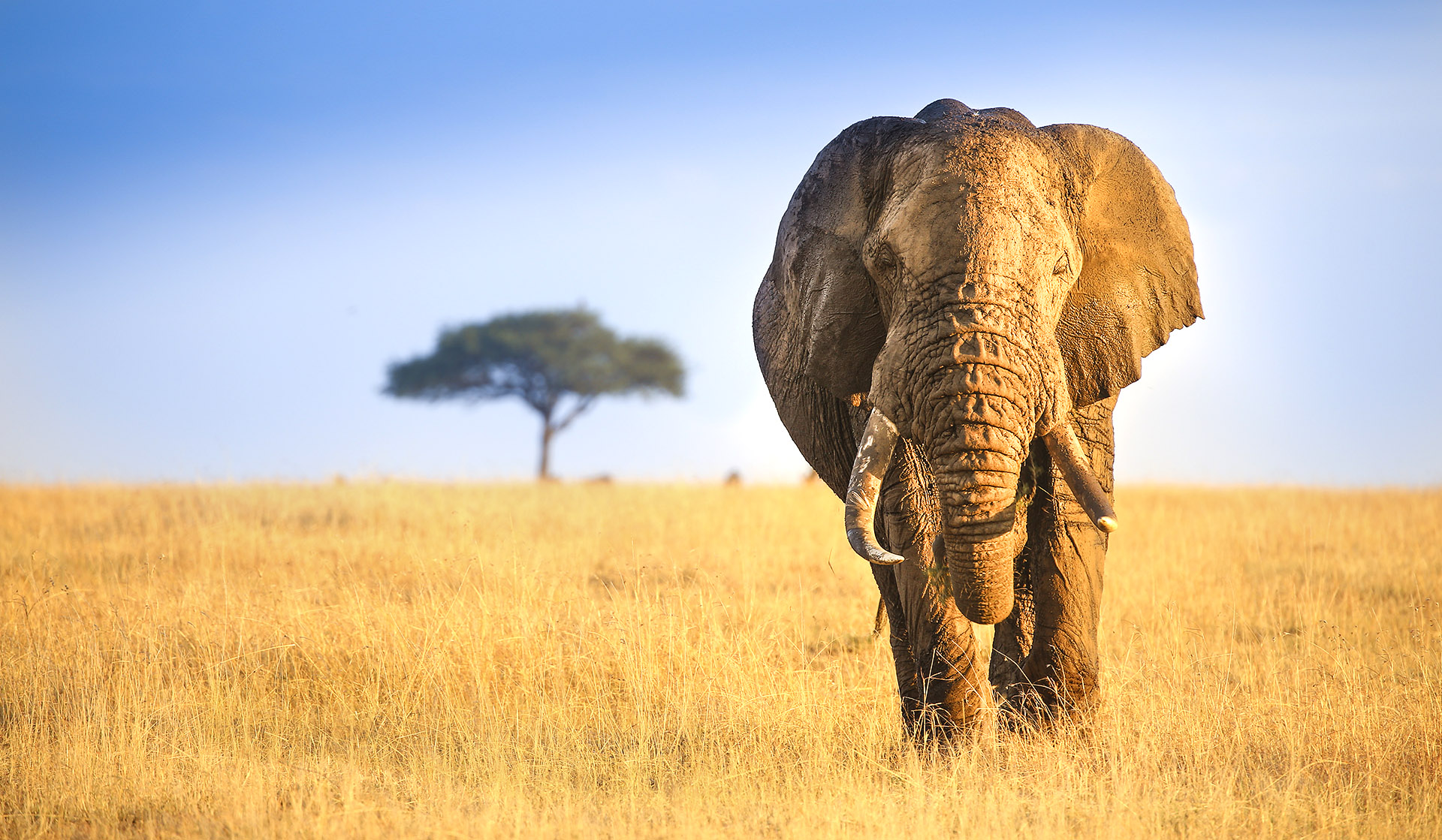
When to go on safari in the Maasai Mara
Maasai Mara
is most popular during Jul-Oct
but can be visited year round

strong wildlife viewing year round
The Maasai Mara is a relatively seasonal area. The main issues are the movement of the migration and the surges in visitor numbers, but the overall wildlife viewing remains strong year round.
The classic time to visit Maasai Mara is during the Jul-Oct dry season, when the main wildebeest migration should be around. This is also a very strong period for other wildlife, but it is also the time at which visitor numbers peak.
The Nov-Feb early green season is also relatively pleasant, albeit without the migration herds and with a big surge in visitors over the Dec-Jan vacation period.
Mar-Jun is the main rainy season, also without the migration and with longer grasses inhibiting wildlife viewing. But with low visitor numbers and improving significantly into June.
Seasonality data for safari in Kenya
the weather can play a major role
in the safari experience
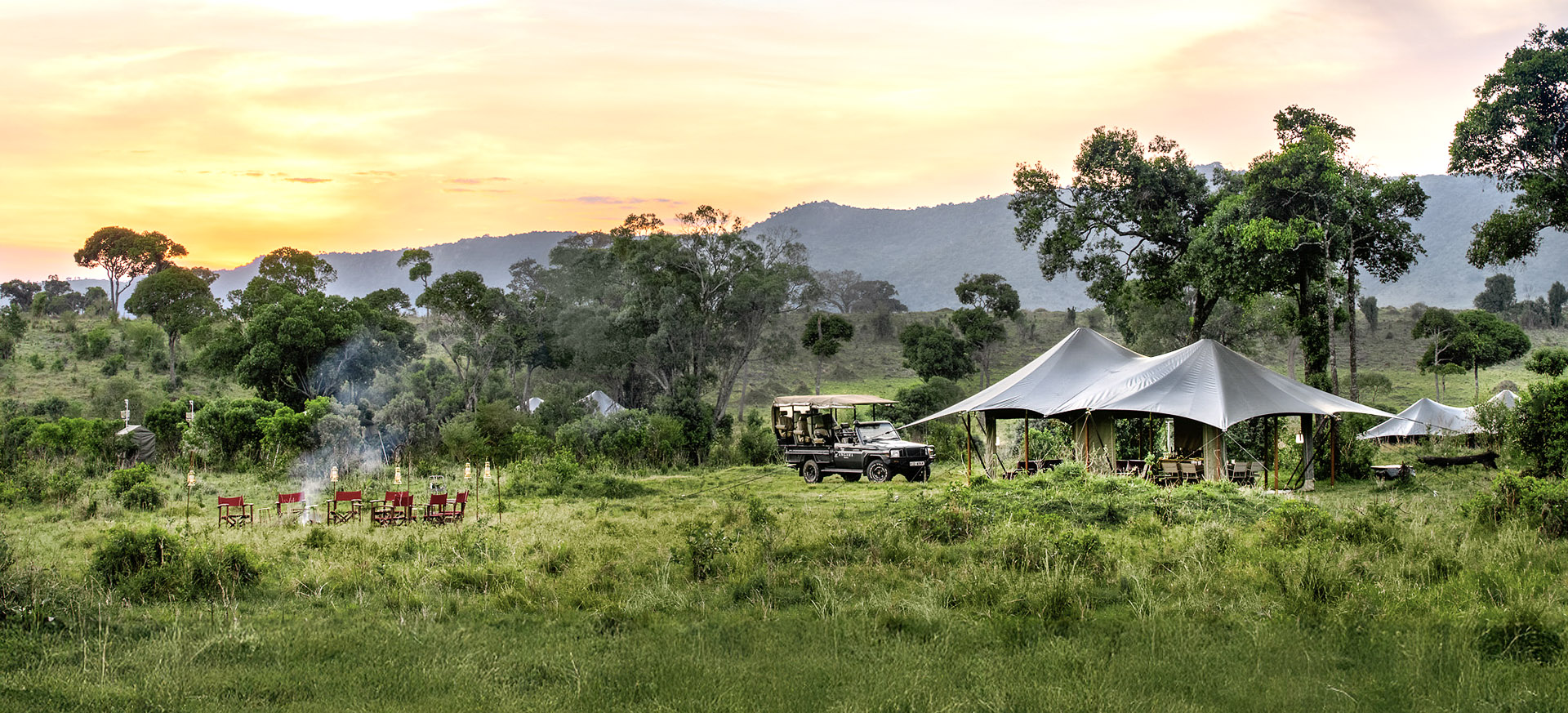
Rating : 8.0
This is generally considered to be a pretty good month to visit this area.
Climate : good
Average daily temperature : 27C/81F
Average nightly temperature : 17C/63F
Rainfall : 80mm/3.3″ : medium
Relative humidity : 50%
During January light rain showers are expected to continue through the month in the Maasai Mara. Rain typically falls between 6 and 10 days during the month. Temperatures remain pleasant, with sunshine holding up at around 6 to 8 hours per day.
Wildlife viewing : good
By January the migration herds should be long gone from the Maasai Mara, off south into the Serengeti and east into the Loita Hills.
Apart from the migration, general wildlife viewing remains strong, with plenty of predator action, especially lions, cheetahs and spotted hyenas, as well as a whole host of other animals. Rhinos are the only major absentees.
By this time the grass may be starting to get quite long, which can impede wildlife viewing a little.
Visitor traffic : very high to medium
The first week in January usually remains very busy in the Maasai Mara, most of the camps will be full and there can be significant traffic issues in and around the main reserve, so great care needs to be taken if you are to avoid getting involved in some nasty vehicle traffic around sightings. At this time we strongly recommend deploying most if not all of your nights in the private conservancies immediately to the north, where there are no significant traffic issues.
For the remainder of the month the visitor numbers plummet and traffic becomes much less of an issue, although care still needs to be taken in core areas of the main reserve and the private conservancies remain generally more attractive.
a pretty good month, once the New Year crowd has left
Rating : 8.0
This is generally considered to be a pretty good month to visit this area.
Climate : moderate
Average daily temperature : 28C/82F
Average nightly temperature : 18C/64F
Rainfall : 100mm/4.0″ : high
Relative humidity : 53%
During February in the Maasai Mara light rain showers are expected to continue, increasing as March approaches. Rain typically falls between 8 and 12 days during the month. Temperatures remain pleasant, with sunshine holding up at around 6 to 8 hours per day.
Wildlife viewing : medium to good
In February the migration herds should still be absent from the Maasai Mara, off south into the Serengeti and east into the Loita Hills.
Apart from the migration, general wildlife viewing remains strong, with plenty of predator action, especially lions, cheetahs and spotted hyenas, as well as a whole host of other animals. Rhinos are the only major absentees.
By this time the grass should be starting to get quite long, which can impede wildlife viewing in some areas, making it more difficult to find leopards in particular.
Visitor traffic : medium
During February visitor numbers in the Maasai Mara remain relatively low and traffic becomes much less of an issue than in high season, although care still needs to be taken in core areas of the main reserve and the private conservancies remain generally more attractive.
a really strong month, albeit without the migration
Rating : 6.0
Climate : moderate to poor
Average max temp : 28C/82F
Average min temp : 18C/64F
Average rainfall : 124mm/4.8″
Relative humidity : 52%
March is the month when the main rains usually get underway in the Maasai Mara, although in reality they are only marginally heavier than the preceding months. Rain typically falls between 10 and 20 days during the month. Usually this takes the form of showers, but can form torrential downpours or, even worse, a persistent drizzle under grey skies. Temperatures remain pleasant, with sunshine holding up at around 5 to 7 hours per day.
Wildlife viewing : medium to good
In March the migration herds should still be absent from the Maasai Mara, off south into the Serengeti and east into the Loita Hills.
Apart from the migration, general wildlife viewing remains strong, with plenty of predator action, especially lions, cheetahs and spotted hyenas, as well as a whole host of other animals. Rhinos are the only major absentees.
By this time the grass should be starting to get quite long, which can impede wildlife viewing in some areas, making it more difficult to find leopards in particular.
Visitor traffic : medium
During March in the Maasai Mara visitor numbers remain relatively low and traffic becomes much less of an issue than in high season, although care still needs to be taken in core areas of the main reserve and the private conservancies remain generally more attractive.
quite rainy, but pleasantly quiet
Rating : 5.0
This is generally considered to be a less favourable month to visit this area.
Climate : moderate to poor
Average daily temperature : 26C/79F
Average nightly temperature : 18C/64F
Rainfall : 170mm/6.7″ : very high
Relative humidity : 65%
April is the month upon which the main rains are usually centred in the Maasai Mara. Rain typically falls between 10 and 20 days during the month. Usually this takes the form of showers, but can form torrential downpours or, even worse, a persistent drizzle under grey skies. Temperatures remain pleasant, with sunshine holding up at around 5 to 7 hours per day.
Wildlife viewing : medium to good
In April the migration herds should still be absent from the Maasai Mara, off south into the Serengeti and east into the Loita Hills.
Apart from the migration, general wildlife viewing remains strong, with plenty of predator action, especially lions, cheetahs and spotted hyenas, as well as a whole host of other animals. Rhinos are the only major absentees.
By this time the grass should be starting to get quite long, which can impede wildlife viewing in some areas, making it more difficult to find leopards in particular. The rainfall can make getting around rather difficult, especially in the swamp areas.
Visitor traffic : low
During April in the Maasai Mara visitor numbers drop to their lowest of the year and traffic becomes much less of an issue, although care still needs to be taken in core areas of the main reserve and the private conservancies remain generally more attractive.
very rainy, but lovely and quiet
Rating : 6.0
This is generally considered to be a slightly less favourable month to visit this area.
Climate : moderate to poor
Average daily temperature : 25C/77F
Average nightly temperature : 18C/64F
Rainfall : 110mm/4.3″ : high
Relative humidity : 67%
May is the month when the main rains usually start to recede in the Maasai Mara. Rain typically falls between 8 and 15 days during the month. Usually this takes the form of showers, but can still form torrential downpours or, even worse, a persistent drizzle under grey skies. Temperatures remain pleasant, with sunshine holding up at around 6 to 8 hours per day.
Wildlife viewing : medium to good
In May the migration herds should still be absent from the Maasai Mara, off south into the Serengeti and east into the Loita Hills.
Apart from the migration, general wildlife viewing remains strong, with plenty of predator action, especially lions, cheetahs and spotted hyenas, as well as a whole host of other animals. Rhinos are the only major absentees.
By this time the grass should be starting to get quite long, which can impede wildlife viewing in some areas, making it more difficult to find leopards in particular. The rainfall can make getting around rather difficult, especially in the swamp areas.
Visitor traffic : low
During May in the Maasai Mara visitor numbers remain low and traffic is much less of an issue, although care still needs to be taken in core areas of the main reserve and the private conservancies remain generally more attractive.
still a little rainy and with long grasses
Overall rating : 8.0
This is generally considered to be a pretty good month to visit this area.
Climate : moderate
Average daily temperature : 25C/77F
Average nightly temperature : 17C/63F
Rainfall : 56mm/2.2″ : low
Relative humidity : 65%
By June the main rains should have largely receded in the Maasai Mara, although showers usually linger well into the month. Rain typically falls between 6 and 10 days per month. Usually this takes the form of showers, but can still form torrential downpours or, even worse, a persistent drizzle under grey skies. Temperatures remain pleasant, with sunshine holding up at around 6 to 8 hours per day.
Wildlife viewing : medium to good
In June the smaller migration herds should start to arrive into the Maasai Mara from the Loita Hills to the east, spreading out across the northern conservancies. However the main migration herds do not usually arrive from Serengeti this early, so one should not expect the usual massed spectacles and river crossings that will become a feature of the next few months.
Apart from the migration, general wildlife viewing remains strong, with plenty of predator action, especially lions, cheetahs and spotted hyenas, as well as a whole host of other animals. Rhinos are the only major absentees.
The grass can still be quite long, which can impede wildlife viewing in some areas, making it more difficult to find leopards in particular.
Visitor traffic : medium to high
During June in the Maasai Mara visitor numbers start to climb and there can be significant traffic issues in and around the main reserve, so great care needs to be taken if you are to avoid getting involved in some nasty vehicle traffic around sightings. At this time we strongly recommend deploying most if not all of your nights in the private conservancies immediately to the north, where there are no significant traffic issues.
improving conditions, but early for the migration
Overall rating : 9.0
This is generally considered to be a good month to visit this area.
Climate : very good
Average daily temperature : 25C/77F
Average nightly temperature : 17C/63F
Rainfall : 27mm/1.1″ : low
Relative humidity : 65%
By July in the Maasai Mara the dry season is usually well underway and rain should be limited to just the occasional light showers. Temperatures remain pleasant, with sunshine typically up at 8 to 11 hours per day.
Wildlife viewing : very good
July is usually the month when the main migration herds arrive into the Maasai Mara from the Serengeti in the south, so river crossings start to become a major feature, with plenty of crocodile action.
Apart from the migration, general wildlife viewing remains very strong, with plenty of predator action, especially lions, cheetahs and spotted hyenas, as well as a whole host of other animals. Rhinos are the only major absentees.
Visitor traffic : high to very high
During July in the Maasai Mara visitor numbers start to reach a peak and there can be very significant traffic issues in and around the main reserve, so great care needs to be taken if you are to avoid getting involved in some nasty vehicle traffic around sightings. At this time we strongly recommend deploying most if not all of your nights in the private conservancies immediately to the north, where there are no significant traffic issues.
fantastic, but getting very busy in the public reserves
Overall rating : 8.0
This is generally considered to be a good month to visit this area.
Climate : very good
Average daily temperature : 25C/77F
Average nightly temperature : 17C/63F
Rainfall : 42mm/1.7″ : low
Relative humidity : 65%
By August in the Maasai Mara the dry season is under full steam and rain should be limited to just the occasional light showers. Temperatures remain pleasant, with sunshine typically up at 8 to 11 hours per day. The light can start to get a little less clear for photography as the land dries and becomes more dusty.
Wildlife viewing : very good
August is a major month for migration action in the Maasai Mara, so river crossings are a major feature, with plenty of crocodile action.
Apart from the migration, general wildlife viewing remains very strong, with plenty of predator action, especially lions, cheetahs and spotted hyenas, as well as a whole host of other animals. Rhinos are the only major absentees.
Visitor traffic : very high
During August in the Maasai Mara visitor numbers are at their peak and there can be chronic traffic issues in and around the main reserve, so great care needs to be taken if you are to avoid getting involved in some nasty vehicle traffic around sightings. At this time we strongly recommend deploying most if not all of your nights in the private conservancies immediately to the north, where there are no significant traffic issues.
great conditions, but horrible traffic in the public reserves
Overall rating : 9.0
This is generally considered to be one of the best months to visit this area.
Climate : very good
Average daily temperature : 26C/79F
Average nightly temperature : 17C/63F
Rainfall : 48mm/1.9″ : low
Relative humidity : 61%
By September in the Maasai Mara the dry season is under full steam and rain should be limited to just the occasional light showers. Temperatures remain pleasant, with sunshine typically up at 8 to 11 hours per day. The light can be a little less clear for photography as the land has dried out and become more dusty.
Wildlife viewing : very good
September is a major month for migration action in the Maasai Mara, so river crossings are a major feature, with plenty of crocodile action.
Apart from the migration, general wildlife viewing remains very strong, with plenty of predator action, especially lions, cheetahs and spotted hyenas, as well as a whole host of other animals. Rhinos are the only major absentees.
Visitor traffic : very high
During September in the Maasai Mara visitor numbers are not far off their August peak and there can be chronic traffic issues in and around the main reserve, so great care needs to be taken if you are to avoid getting involved in some nasty vehicle traffic around sightings. At this time we strongly recommend deploying most if not all of your nights in the private conservancies immediately to the north, where there are no significant traffic issues.
arguably the best month in the Mara
Overall rating : 9.0
This is generally considered to be one of the best months to visit this area.
Climate : very good
Average daily temperature : 27C/81F
Average nightly temperature : 17C/63F
Rainfall : 53mm/2.1″ : medium
Relative humidity : 61%
By October in the Maasai Mara the dry season is reaching its climax and rain should be limited to just the occasional light showers. Temperatures remain pleasant, with sunshine typically up at 8 to 11 hours per day. The light can be a little less clear for photography as the land has dried out and become more dusty.
Wildlife viewing : very good
By October the migration herds have started to think about moving south into the Serengeti, but large herds should remain in the Maasai Mara and river crossings should continue to be a major feature, with plenty of crocodile action.
Apart from the migration, general wildlife viewing remains very strong, with plenty of predator action, especially lions, cheetahs and spotted hyenas, as well as a whole host of other animals. Rhinos are the only major absentees.
Visitor traffic : very high
During October in the Maasai Mara visitor numbers remain not far off their August peak and there can be very serious traffic issues in and around the main reserve, so great care needs to be taken if you are to avoid getting involved in some nasty vehicle traffic around sightings. At this time we strongly recommend deploying most if not all of your nights in the private conservancies immediately to the north, where there are no significant traffic issues.
one of the best months in the Mara
Overall rating : 7.5
This is generally considered to be a pretty good month to visit this area.
Climate : good
Average daily temperature : 27C/81F
Average nightly temperature : 17C/63F
Rainfall : 100mm/4.0″ : medium
Relative humidity : 62%
November in the Maasai Mara usually signals the end of the dry season, with light rain showers expected to increase through the month. The charts show that rain typically falls between 6 and 10 days during the month. Temperatures remain pleasant, with sunshine holding up at around 6 to 8 hours per day.
Wildlife viewing : very good
By November the migration herds should have largely moved away from the Maasai Mara, heading south into the Serengeti and east into the Loita Hills. There may still be a few residual herds around and river crossings may continue to be a feature. In dry years, if the early rains fail to materialise, the migration herds can still be around in force.
Apart from the migration, general wildlife viewing remains very strong, with plenty of predator action, especially lions, cheetahs and spotted hyenas, as well as a whole host of other animals. Rhinos are the only major absentees.
Visitor traffic : high to medium
During November in the Maasai Mara visitor numbers start to fall and the significant traffic issues in and around the main reserve can start to ease, although great care still needs to be taken if you are to avoid getting involved in vehicle traffic around sightings. At this time we continue to recommend deploying most if not all of your nights in the private conservancies immediately to the north, where there are no significant traffic issues.
a reasonably good and pleasantly quiet month
Overall rating : 7.0
This is generally considered to be a pretty good month to visit this area.
Climate : good
Average daily temperature : 26C/79F
Average nightly temperature : 17C/63F
Rainfall : 112mm/4.4″ : high
Relative humidity : 58%
During December in the Maasai Mara light rain showers are expected to continue through the month. Rain typically falls between 6 and 10 days during the month. Temperatures remain pleasant, with sunshine holding up at around 6 to 8 hours per day.
Wildlife viewing : good
By December the migration herds should have moved off completely from the Maasai Mara, heading south into the Serengeti and east into the Loita Hills.
Apart from the migration, general wildlife viewing remains strong, with plenty of predator action, especially lions, cheetahs and spotted hyenas, as well as a whole host of other animals. Rhinos are the only major absentees.
Visitor traffic : medium to very high
For the first three weeks in December visitor numbers in the Maasai Mara remain relatively low and traffic is much less of an issue, although care still needs to be taken in core areas of the main reserve and the private conservancies remain generally more attractive.
During the last week of the month it’s usually very busy in the Maasai Mara, most of the camps will be full and there can be significant traffic issues in and around the main reserve, so great care needs to be taken if you are to avoid getting involved in some nasty vehicle traffic around sightings. At this time we strongly recommend deploying most if not all of your nights in the private conservancies immediately to the north, where there are no significant traffic issues.
a reasonable time, but busy over Xmas
let us know your thoughts about Kenya
and we will help you create the perfect trip

Extraordinary tailor-made adventures,
from earthy and edgy to easy and extravagant
From around USD 2500 per person, you set the ceiling
Sample Trips
Here are some of our popular trip shapes
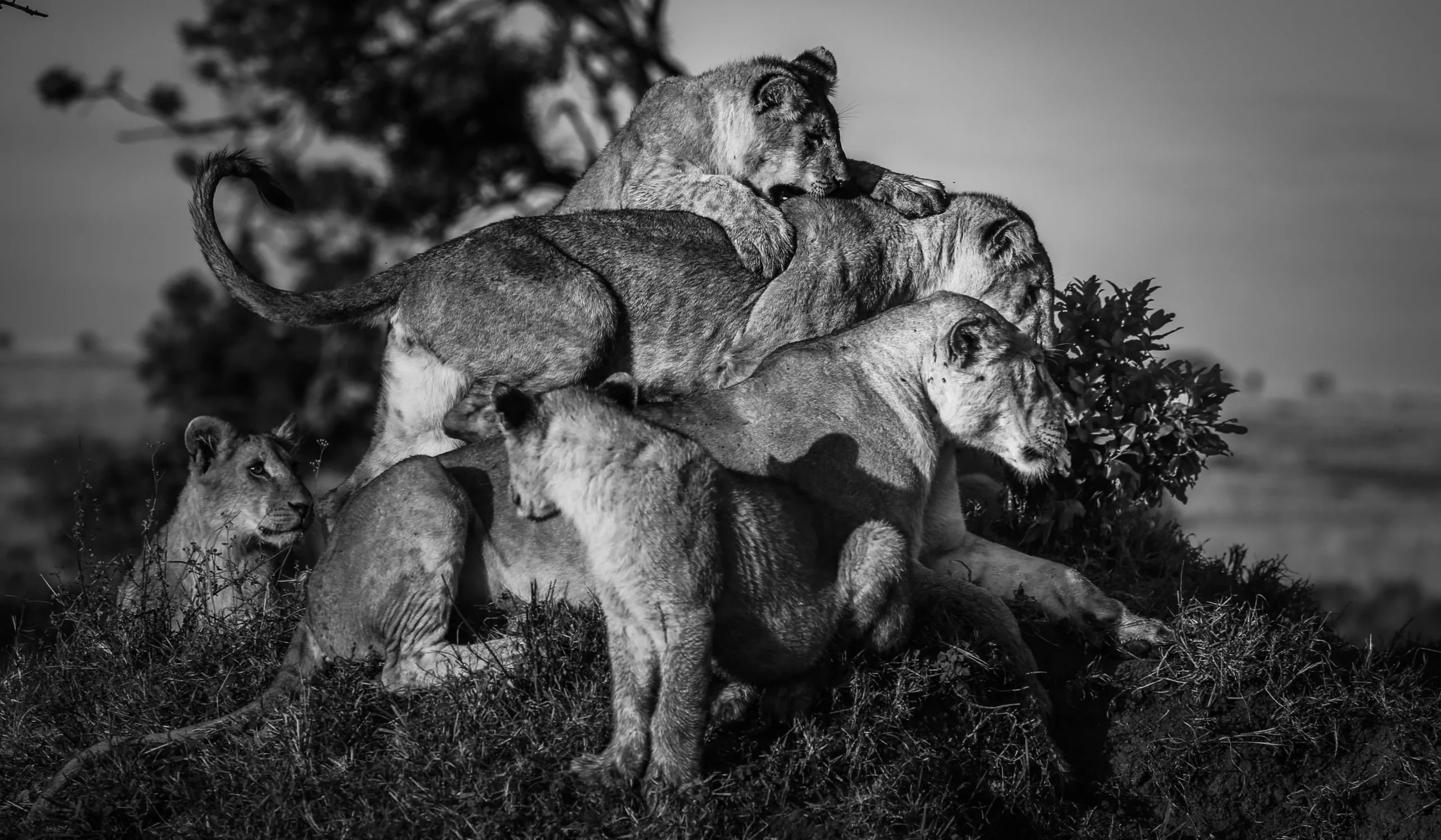
Get started on your trip
It’s never too soon to get in touch, we are here to help with every stage of your planning.
Best Lodges
We regularly inspect and photograph all of the the best lodges, to ensure that we always recommend the most suitable options
Key Locations
Take a look around related locations. Click ‘View more’ to explore locations further afield.
